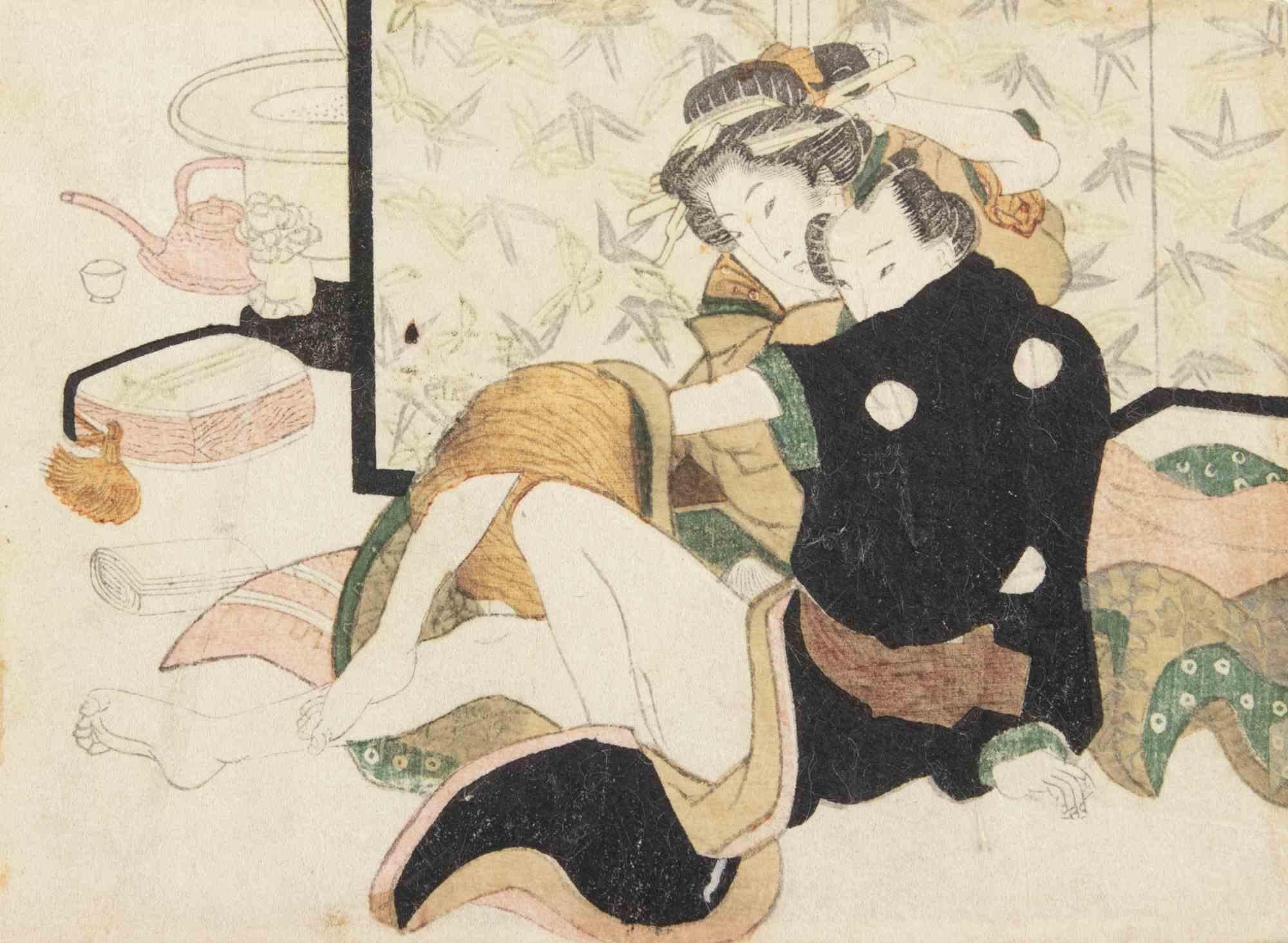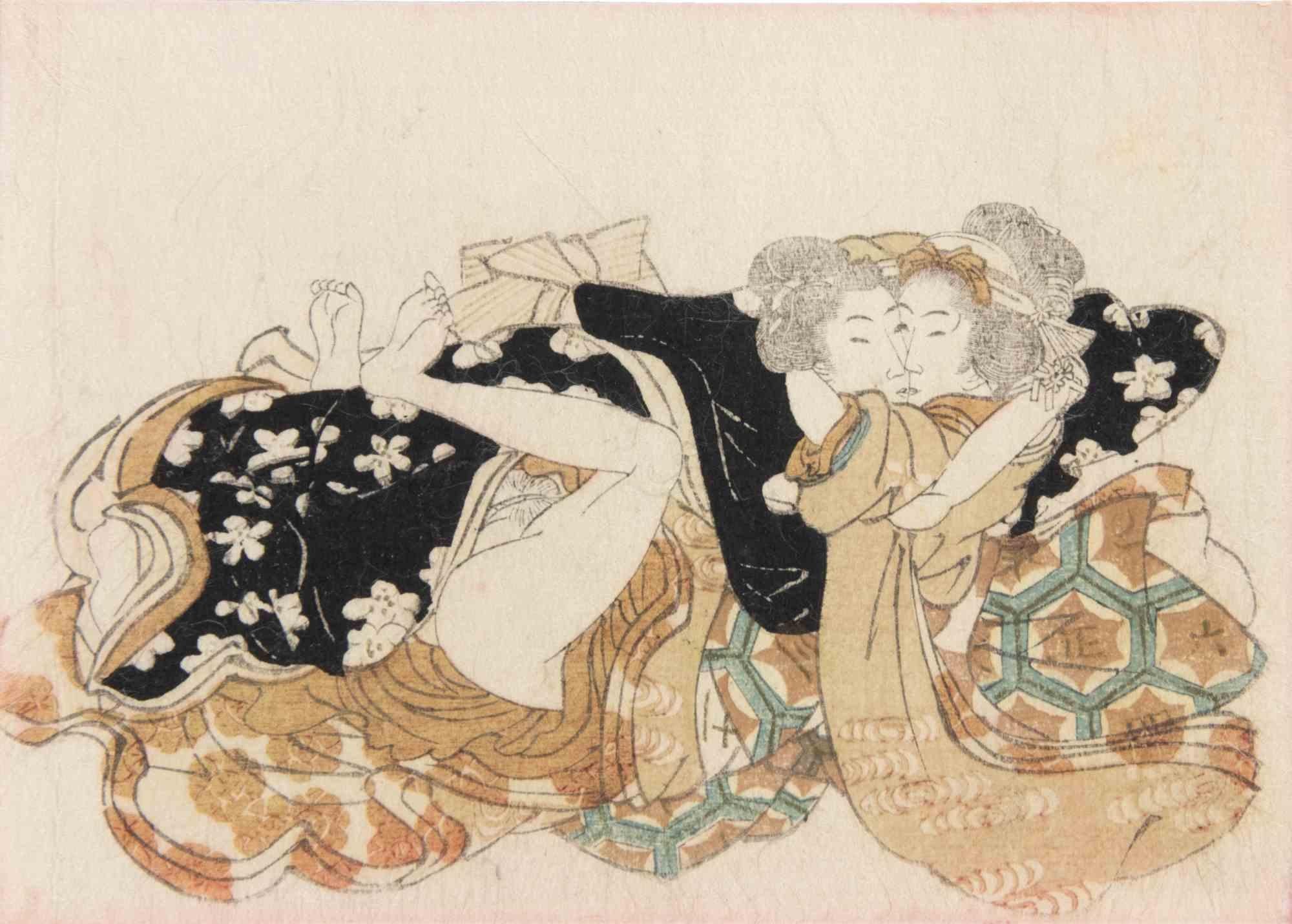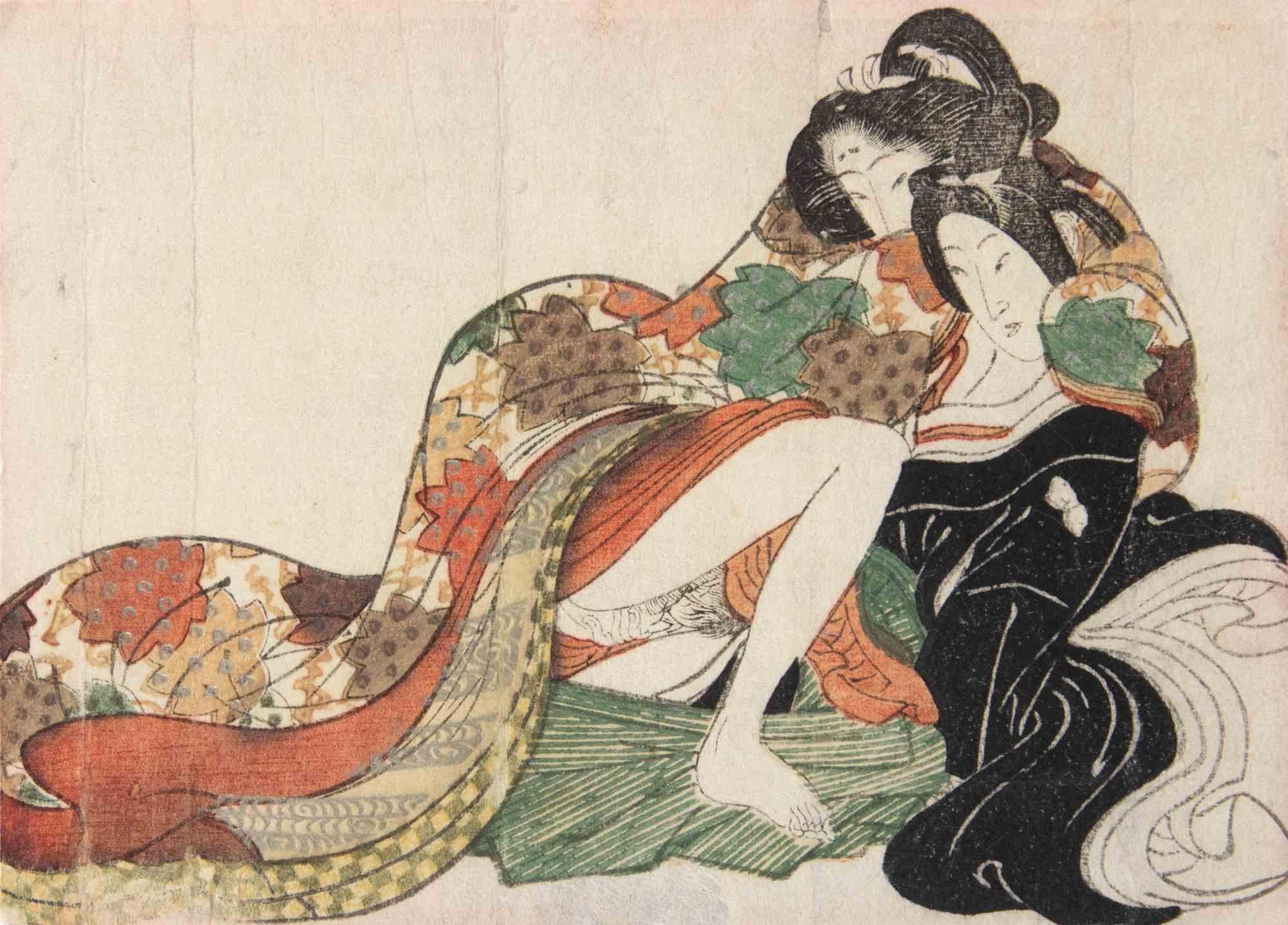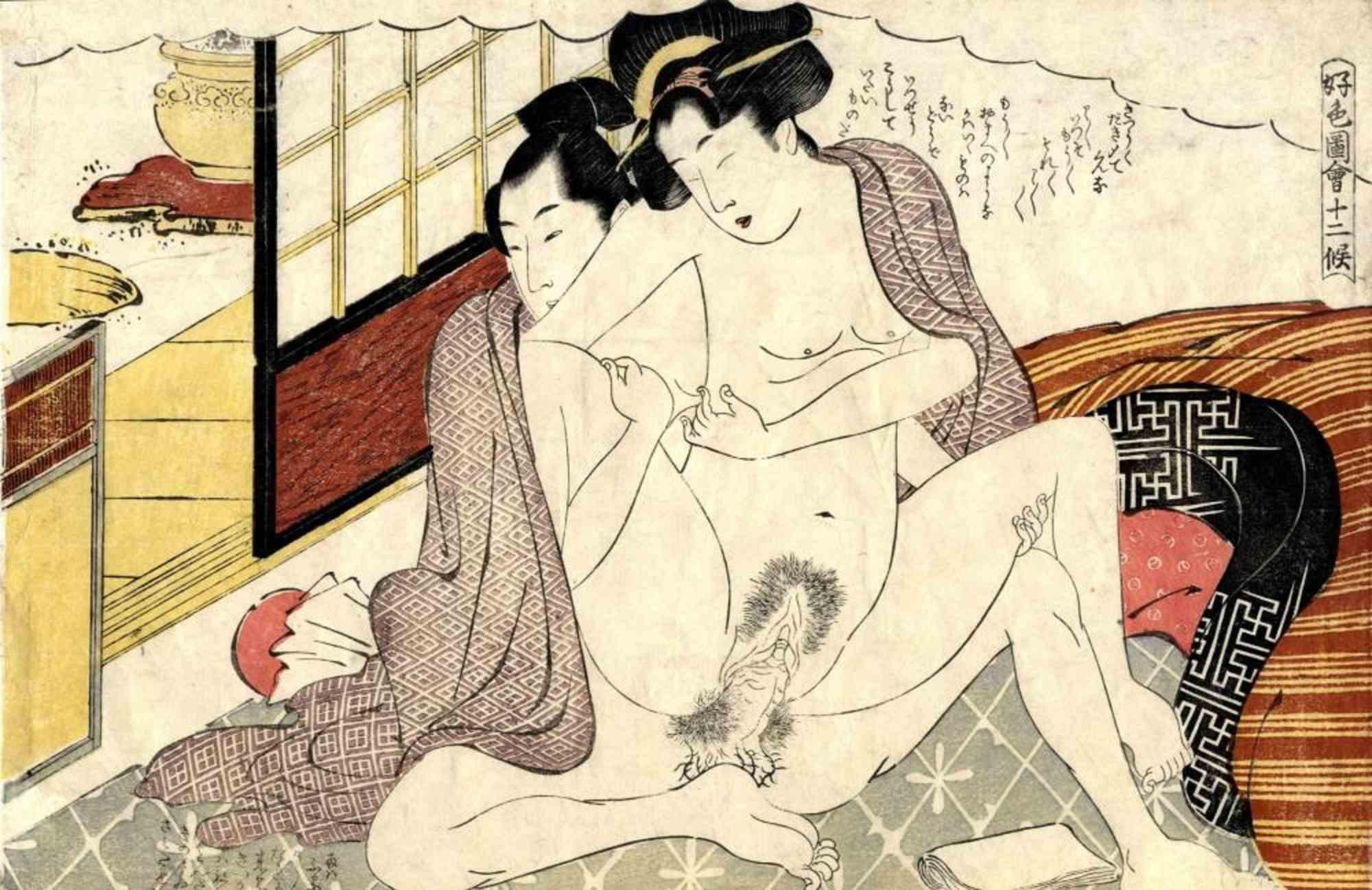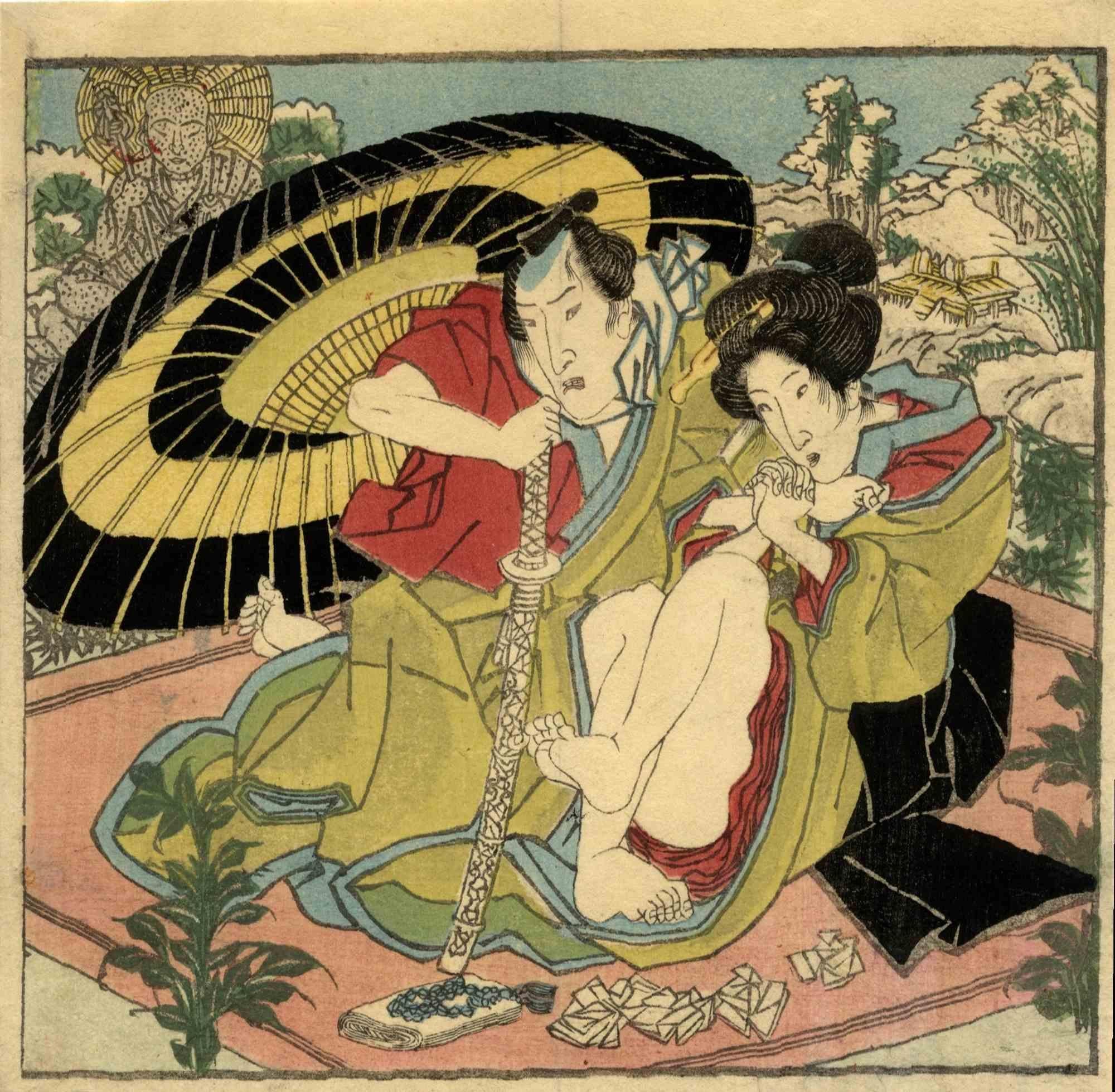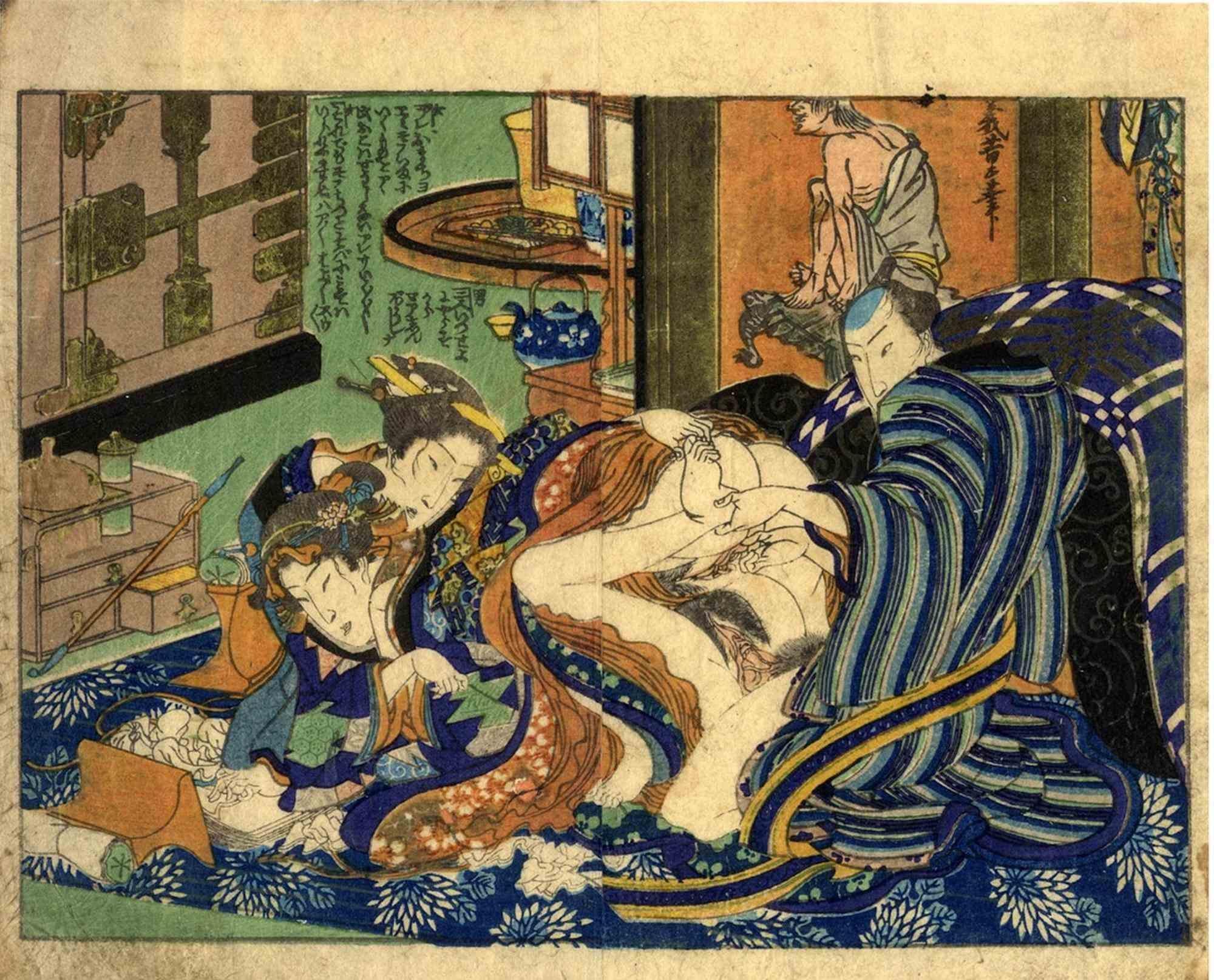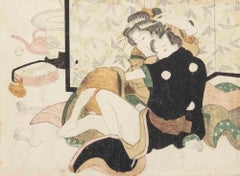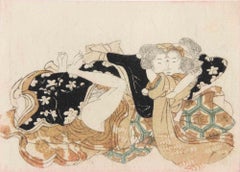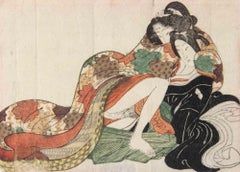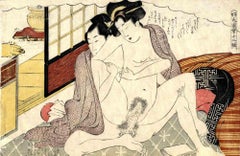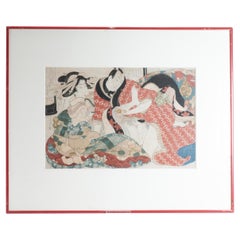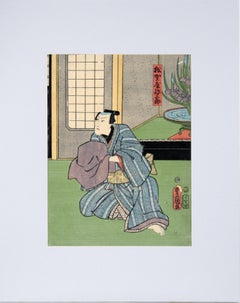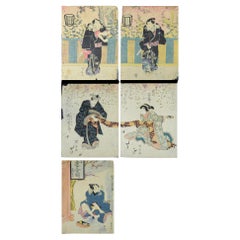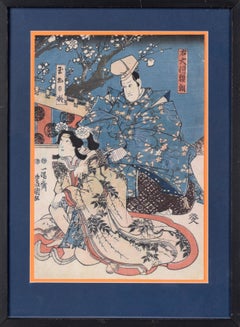Katsukawa ShunshōShunga - Woodcut by Katsukawa Schuncho - Mid-18th CenturyMid-18th Century
Mid-18th Century
About the Item
- Creator:Katsukawa Shunshō (1726 - 1793, Japanese)
- Creation Year:Mid-18th Century
- Dimensions:Height: 7.88 in (20 cm)Width: 11.82 in (30 cm)Depth: 0.04 in (1 mm)
- Medium:
- Movement & Style:
- Period:
- Framing:Framing Options Available
- Condition:Insurance may be requested by customers as additional service, contact us for more information.
- Gallery Location:Roma, IT
- Reference Number:Seller: T-1250961stDibs: LU65038986492
Katsukawa Shunshō
Katsukawa Shunshō was a Japanese painter and engraver, exponent of the Ukiyo-e style and the main artist of the Katsukawa school. Shunshō studied at Miyagawa Shunsui and is known for introducing kabuki actors to a new form of Yakusha-e. His paintings Bijin-ga (images of beautiful women), although less famous, are defined by some scholars as "the best of the second half of the 18th century". Among his students were the famous Ukiyo-e artists Shunchō, Shun'ei and Hokusai. Most of the prints of Shunshō actors are in Hoso-e (33x15 centimeters) common format of the period, but he also created a large number of works in triptychs or pentattics. He was also one of the first pioneers of realistic experiments on actors; in Shunshō’s paintings, unlike the works of the Torii school, it is possible for the first time to distinguish not only the theatrical role but also the actor who plays this role.
- ShippingRetrieving quote...Shipping from: Monaco, Monaco
- Return Policy
More From This Seller
View AllMid-19th Century Modern Figurative Prints
Woodcut
Mid-19th Century Modern Figurative Prints
Woodcut
Mid-19th Century Modern Figurative Prints
Woodcut
1750s Modern Figurative Prints
Paper, Woodcut
1850s Modern Figurative Prints
Woodcut
1850s Modern Figurative Prints
Woodcut
You May Also Like
Antique 19th Century Japanese Edo Prints
Paper
1850s Edo Figurative Prints
Paper, Ink, Woodcut
Antique Early 19th Century Japanese Prints
Paper
1890s Edo Landscape Prints
Ink, Rice Paper, Woodcut
1770s Other Art Style Figurative Prints
Woodcut
18th Century Edo Figurative Prints
Ink, Rice Paper, Woodcut
